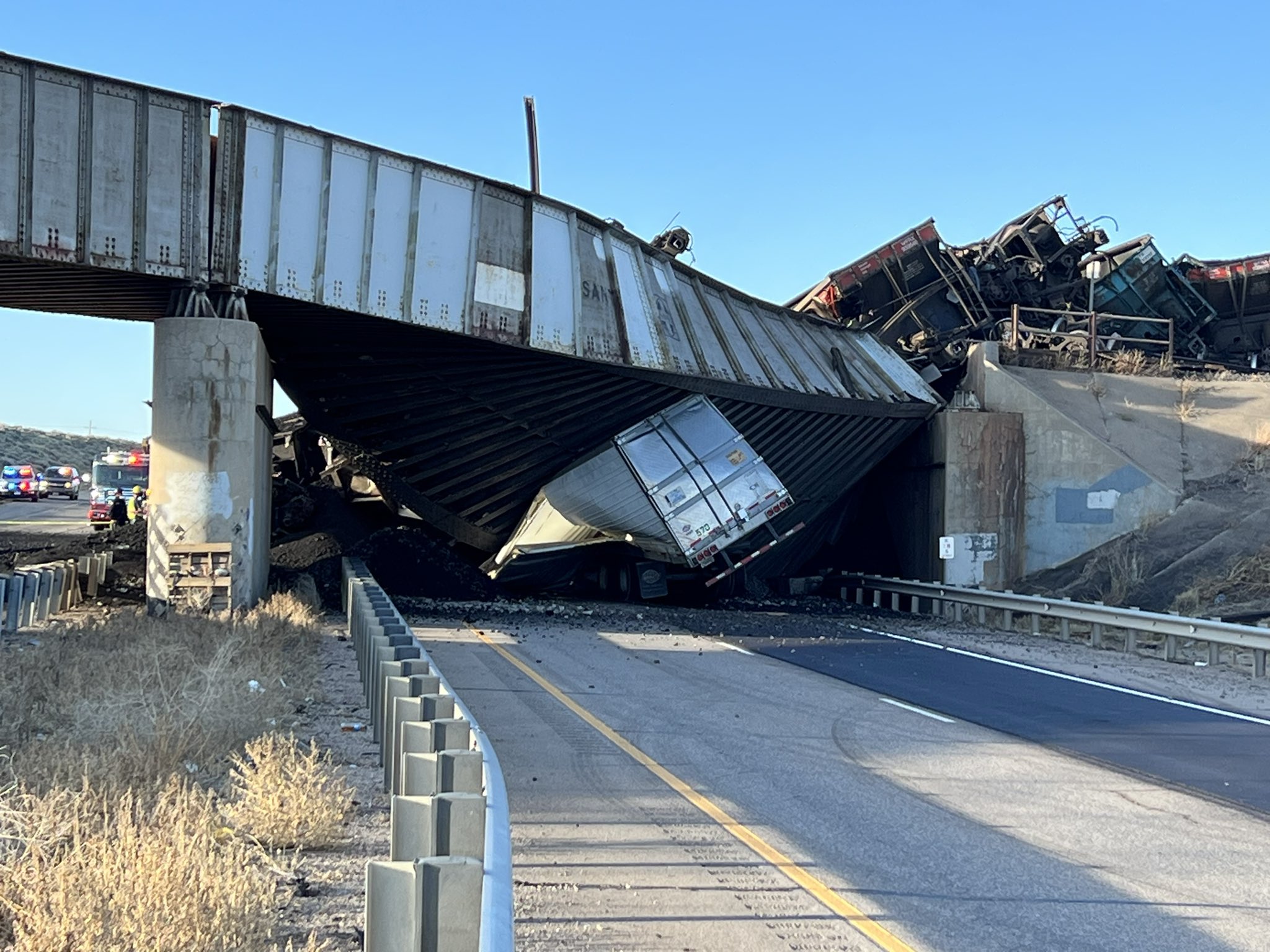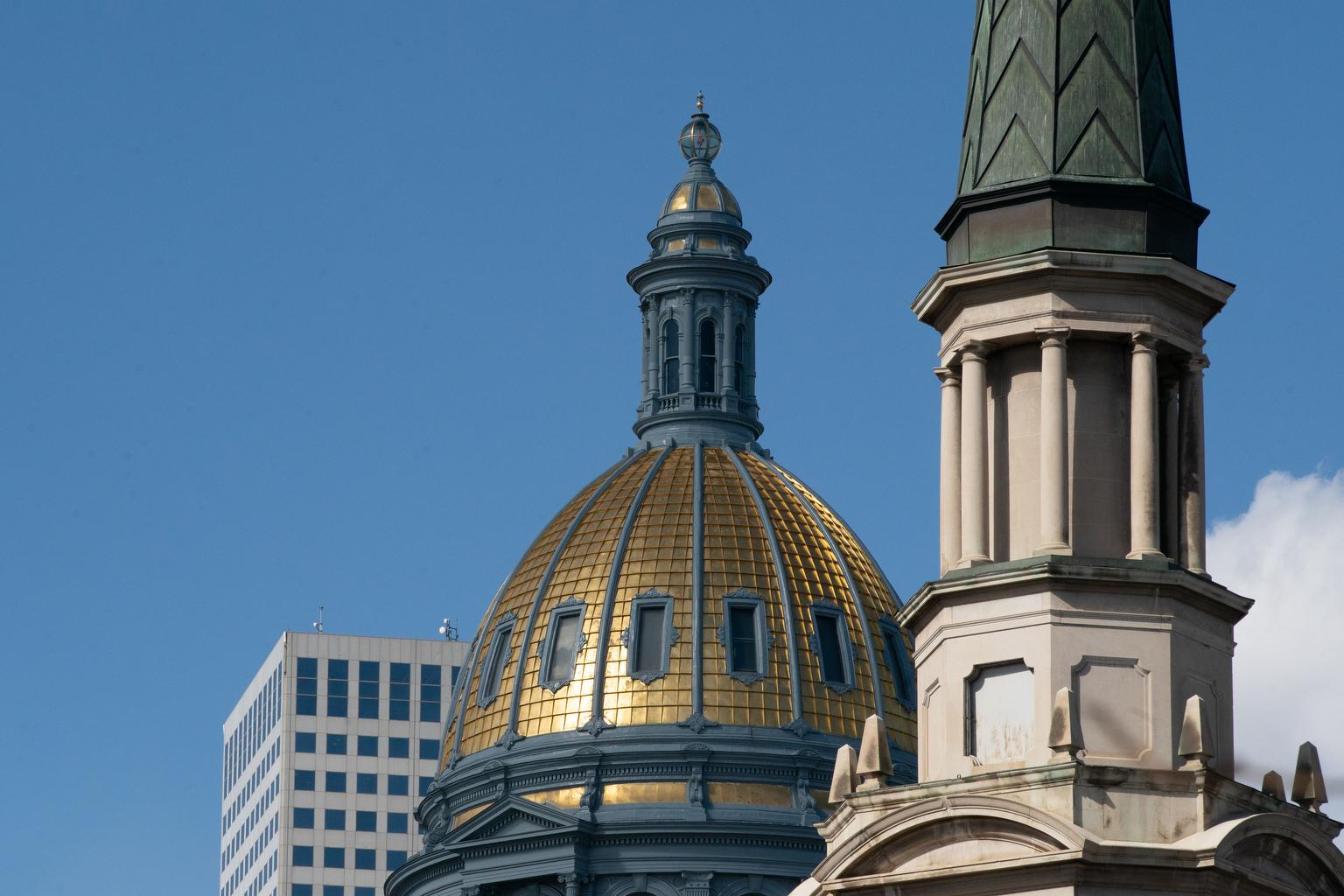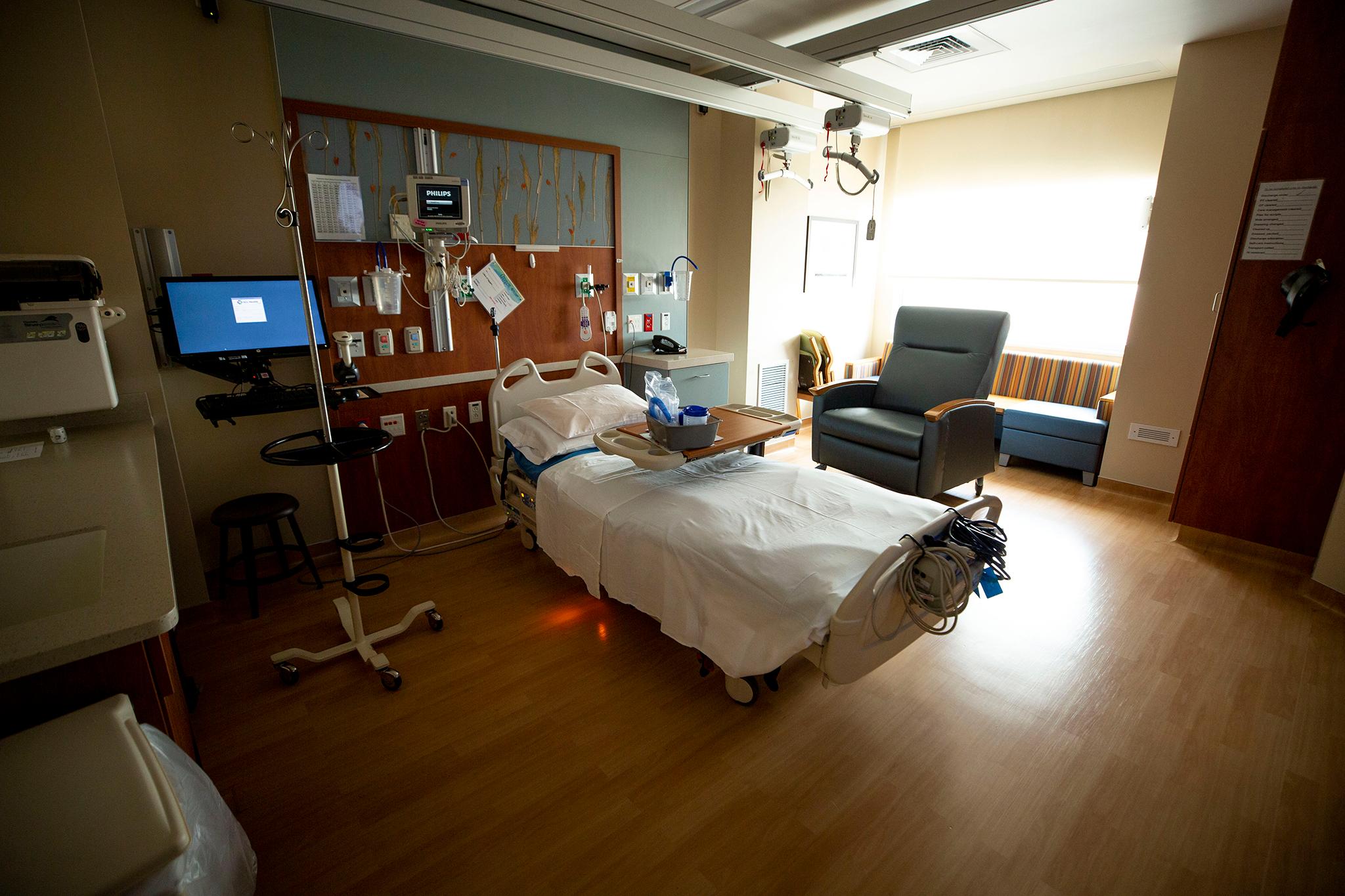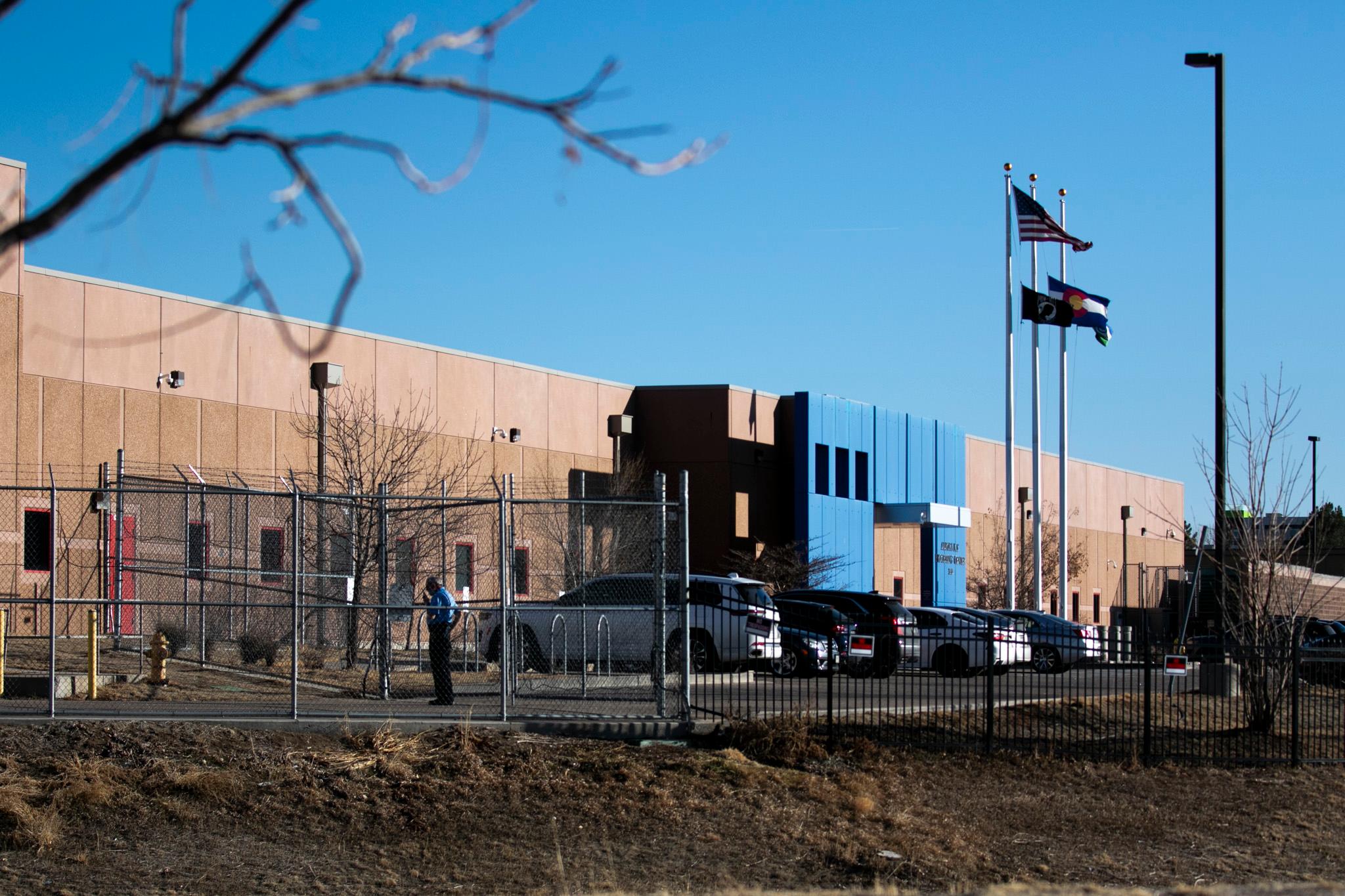
Updated at 9:25 p.m. on Monday Oct. 16, 2023.
There was some initial confusion over who owned the bridge that collapsed onto I-25 near Pueblo on Sunday, killing a semi-trailer truck driver and spilling coal as well as mangled rail cars onto the roadway. The interstate is shut down indefinitely, authorities said Monday.
Photos and videos posted by authorities showed the partially collapsed bridge with the semi-truck caught beneath in the right lane. The images also show a pileup of train cars and wheels scattered across the scene and loads of coal covering a portion of the highway. Thirty-nine cars of the 124 being hauled derailed, the National Transportation Safety Board said.
It was not immediately known whether the truck was caught beneath the collapsing bridge or if it somehow caused the collapse, Pueblo County Sheriff’s Office spokesperson Gayle Perez said. It was also unknown if the derailment or collapse came first.
Former NTSB accident investigator Russell Quimby said it was unlikely that the truck caused the accident because rail bridges are built sturdily and the truck wouldn't have had enough force to knock it down. A more likely scenario, he said, is that part of the train derailed and slammed into the side of the bridge, causing the girders that hold it up to be displaced and causing the bridge to fall.
Quimby said the most likely scenario was that the derailed cars slammed into the side of the bridge, causing the girders that support it to be displaced and causing the bridge to fall
Department spokesperson Bob Wilson said early Monday that it was BNSF’s bridge and the railroad was responsible for inspecting it. But Wilson later said the ownership was unclear and that state officials were going through their records to figure it out.
A BNSF spokesperson said it was owned by the state.
Potential sabotage or vandalism also will be looked at by investigators, he said.
“Usually that's pretty obvious,” Quimby said. “If they find something that looks like some kind of vandalism or foul play, they would call in the FBI and it would become a crime scene."
The National Transportation Safety Board was sending investigators to the site, which is just north of Pueblo.
The bridge was built in 1958 according to state records, Wilson said.
The 60-year-old driver was initially said to be trapped in the Sunday afternoon accident, but authorities said Monday that he had died. It was unknown whether any other vehicles were involved, Perez said.
Officials didn’t provide details about the truck driver’s death, citing the ongoing investigation. Until investigators are able to assess the scene, it’s unknown what the timeline for the highway’s reopening will be, Perez said.
The BNSF train carrying coal derailed around 3:30 p.m. on Sunday, according to Kendall Kirkham Sloan, a spokesperson for the Fort Worth, Texas-based freight railroad. There were no reported injuries to BNSF crew. The cause of the derailment was under investigation and BNSF personnel were working with responding agencies to clear the incident as safely as possible, Kirkham Sloan said.
Transportation Secretary Pete Buttigieg said on social media that he had been in touch with Gov. Jared Polis and had been briefed by the Federal Railroad and Federal Highway administrations, which are ready to help support a swift return to normal use for the highway and rail routes.
A nine-mile stretch of I-25 — the main north-south road corridor in Colorado, used by 39,000 to 44,000 vehicles daily — was shut down in what the Colorado Department of Transportation said Monday would be an extended closure.
It could take as long as 48 hours to clear the coal and other debris and make the highway passable, Polis said. That work won't begin until federal investigators give the state clearance to proceed, Polis said. He added that Colorado had been waiting months to receive federal money already dedicated for safety and rail projects.
“Those improvements come too late to prevent this incident,” Polis said in a statement. “I am saddened that a life was lost in this train derailment and send my condolences to his family and loved ones."
How are bridges monitored?
Unlike highway bridges, government agencies don't catalog rail bridges and it’s largely up to the railroads to inspect and maintain them. Federal officials monitor the inspection programs through audits but there is no inventory on the condition of the bridges.
There are somewhere between 61,000 and more than 100,000 railroad bridges across the U.S., according to figures provided by the Federal Railway Administration. The agency defines bridges as having a span of 20 feet or more, whereas some railroads count even short crossings over culverts as bridges.
Congress established the parameters of the government's oversight of bridges and railway administration officials have previously said they were not able to alter that approach unilaterally.
Sunday's accident follows a railroad bridge collapse in June along a Montana Rail Link route in southern Montana that sent railcars with oil products plunging into the Yellowstone River, spilling molten sulfur and up to 250 tons (226.7 metric tons) of hot asphalt. The collapse, which remains under investigation, involved a steel truss bridge.
That's different than the type of bridge that Colorado officials said collapsed on Sunday. The bridge near Pueblo was a 188-feet (57-meter) long steel girder bridge, said Wilson. It was 14 feet (4 meters) feet wide with a clearance of 16.3 feet (five meters), he said.
Combined, those derailments caused about $40 million in damages, the records show. That figure does not include the June derailment. Only one of the accidents involved a fatality, when one person was killed and dozens of people injured after an Amtrak train derailed in Arizona in 1997 while crossing a bridge damaged by runoff from heavy rain.
Despite the two recent accidents, Quimby said it's “extremely” unusual for rail bridges to collapse. Quimby said bridges are key pieces of railroad networks and companies have a vested interest in properly maintaining them. Some railroad bridges are more than a century old but still in good repair, he said.
“The railroads take much better care of their bridges than our government does of our road and highway bridges,” he said. “If you have a bridge out, that's a major problem.”
President Joe Biden had been scheduled to visit CS Wind, the world’s largest facility for wind tower manufacturing, in Pueblo on Monday, but postponed the trip to stay in Washington and focus on the growing conflict in the Middle East. The White House said just a few hours before Biden was set to take off for the trip that it would be rescheduled.
___
Associated Press writers Jesse Bedayn, Colleen Slevin and Matthew Brown reported this story.
Associated Press writers Sarah Brumfield in Washington, D.C. and Josh Funk in Omaha, Nebraska contributed to this story. Brown contributed from Billings.









